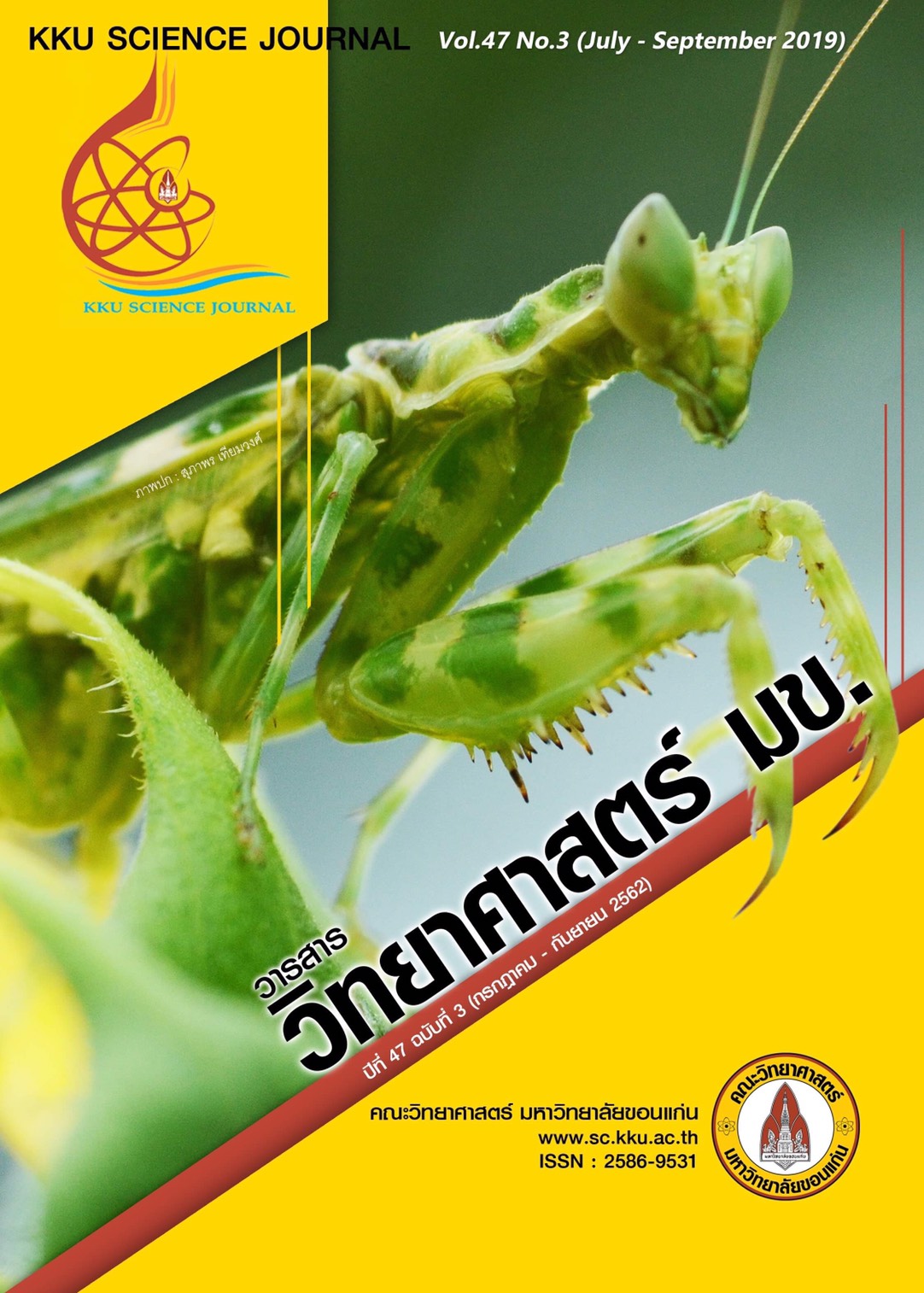Bioaugmentation of Lead Accumulation in Rice
Main Article Content
Abstract
This research investigated bioaugmentation of lead accumulation in rice by comparing various treatments of bacteria (TK1, TK3, RV2, RV4) and evaluating lead accumulation in different parts of plant. The results showed that in term of growth performance (stem height, dry weight, fresh weight), there was no significant difference between rice plants grown in uncontaminated and lead contaminated soils (P>0.05). The highest lead accumulation was found in roots of TK3 (57.67 mg kg-1), followed by shoot of TK3 (19.50 mg kg-1), and grain of RV2 (0.55 mg kg-1). The experimental rice in this study was not suitable for phytoremediation because the values of BCF and TF values were less than 1. BCF is capable to accumulate metals from soils, while TF indicated as the ability to translocate metals from the roots to the shoots and Bacillus subtilis strain EB31 from TK1, isolated from rhizosphere of rice, had the highest potential for lead bioremediation. Bioaugmentation of this research is used for reduction lead accumulation in rice by adding natural bacteria.
Article Details

This work is licensed under a Creative Commons Attribution-NonCommercial-NoDerivatives 4.0 International License.


